Jvarboseli -> Omalo – better than expected
22. June 2023
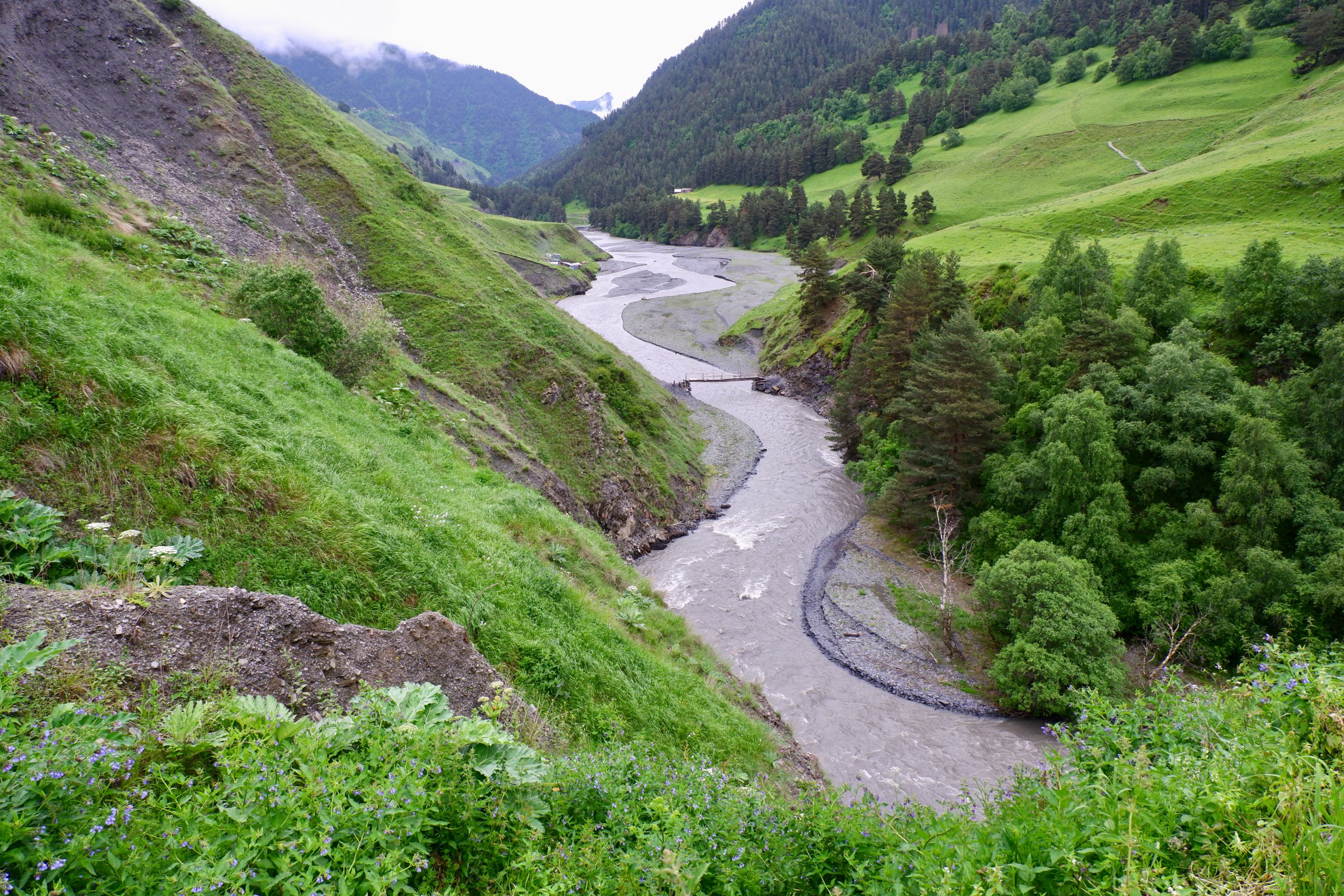
A look outside in the morning said: it’s dry but cloudy. Who knows if it will stay that way. A look inside my shoes said: they are not completely dry, but acceptable to slip into. A feel into my muscles said: there’s still some way to go. A discussion with myself said: it’s good to finish a trek as planned. It will make you feel better at the end. And I will just make it.
Nino had got the altitude figures a bit wrong (there weren’t 1,000 m to go up and down) and I don’t know why exactly, but I have a huge respect for anything over 20km. That seems awfully long and hard for my feet to take. To say it in advance: it is long, but was not at all as bad as I feared.
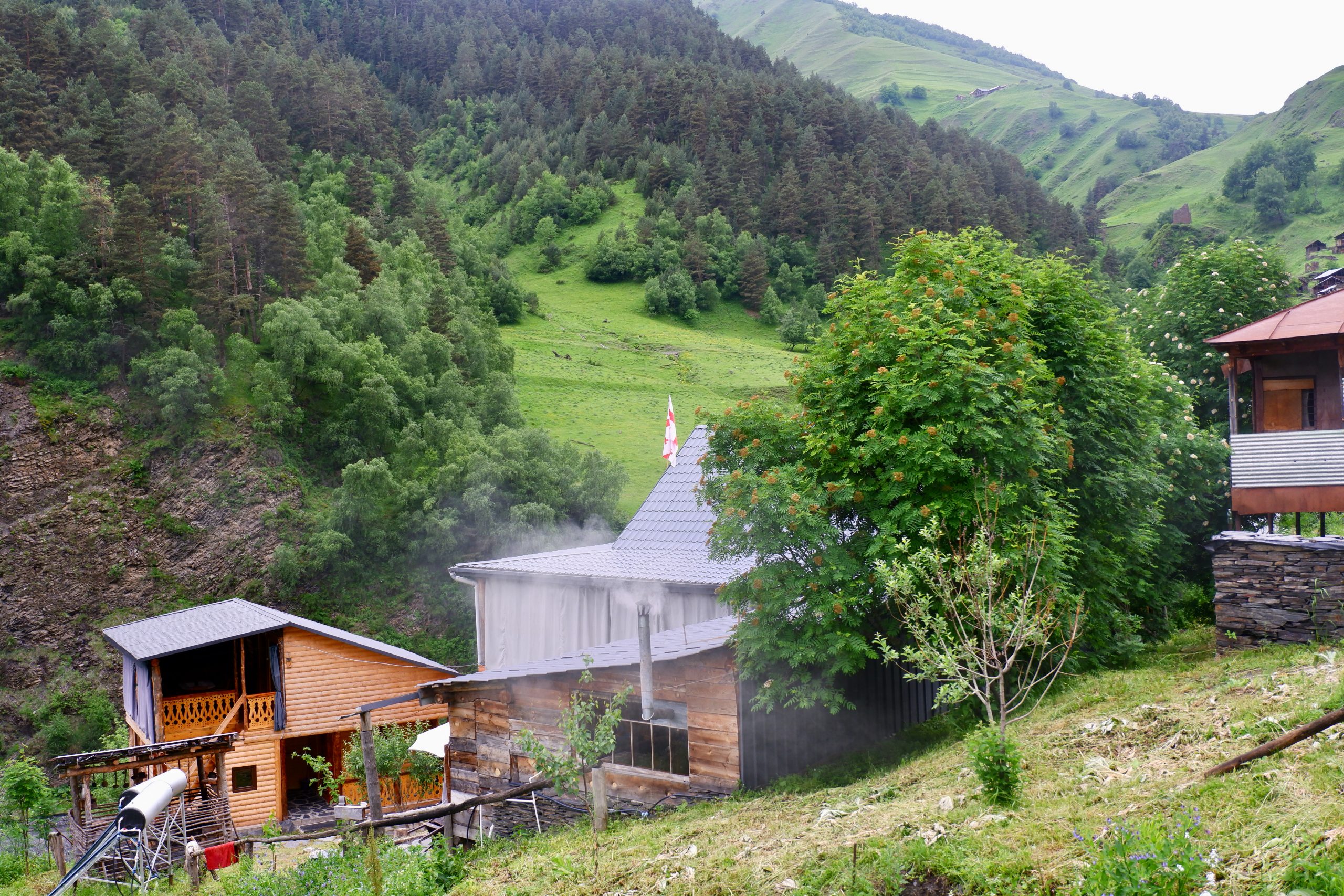 Guesthouse
Guesthouse
So we left the guesthouse and went down to the bridge for the river crossing and on the other side a driving road was waiting for us, which we would take all the way to Omalo.
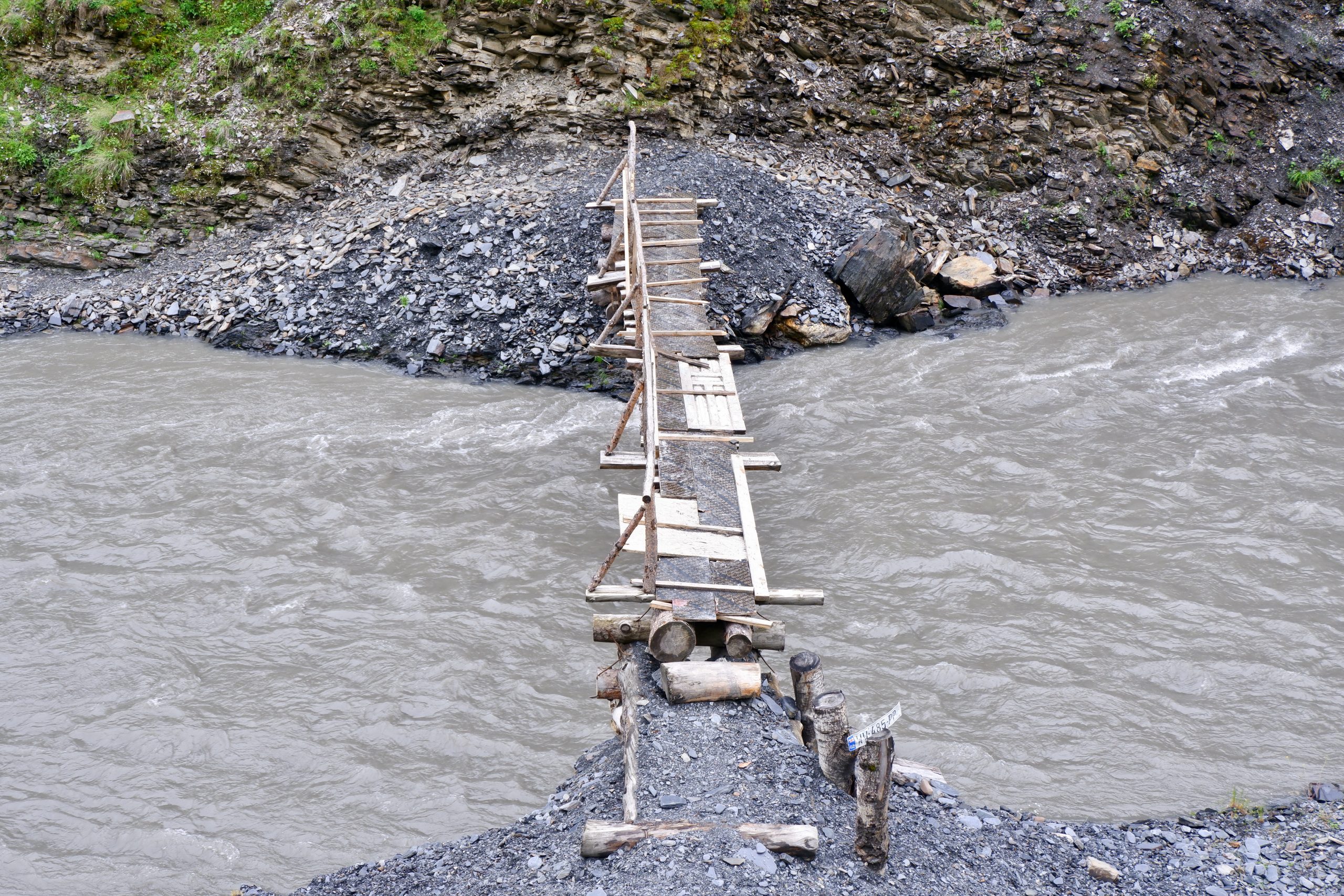 Bridge
Bridge
Right at the beginning there was a river crossing with shoes off on the road – and that remained the only one! It went along this side of the river for a while, then it was crossed on a large bridge and a climb upwards was announced.
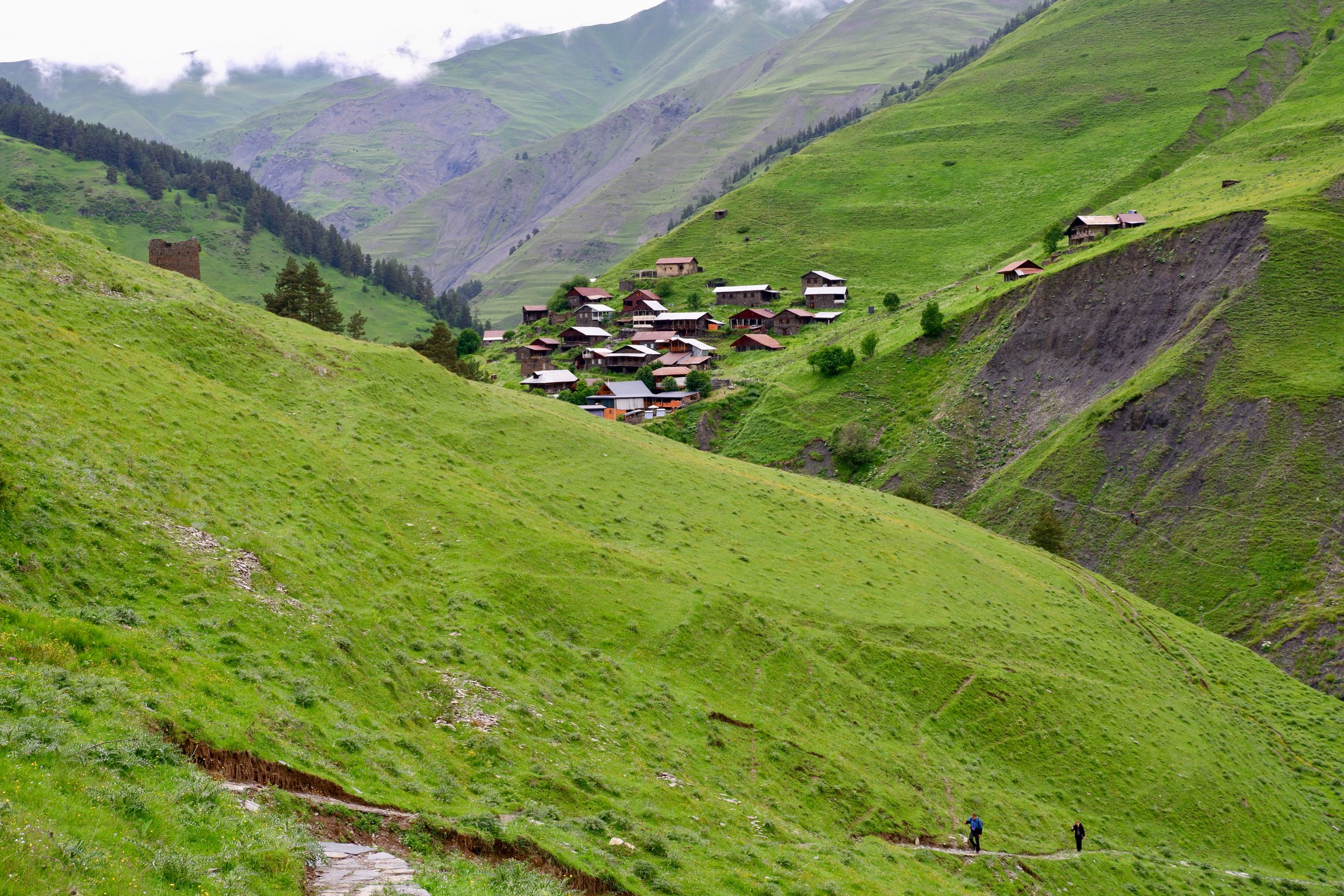 view to Jvarboseli and 2 guys from Leipzig
view to Jvarboseli and 2 guys from Leipzig
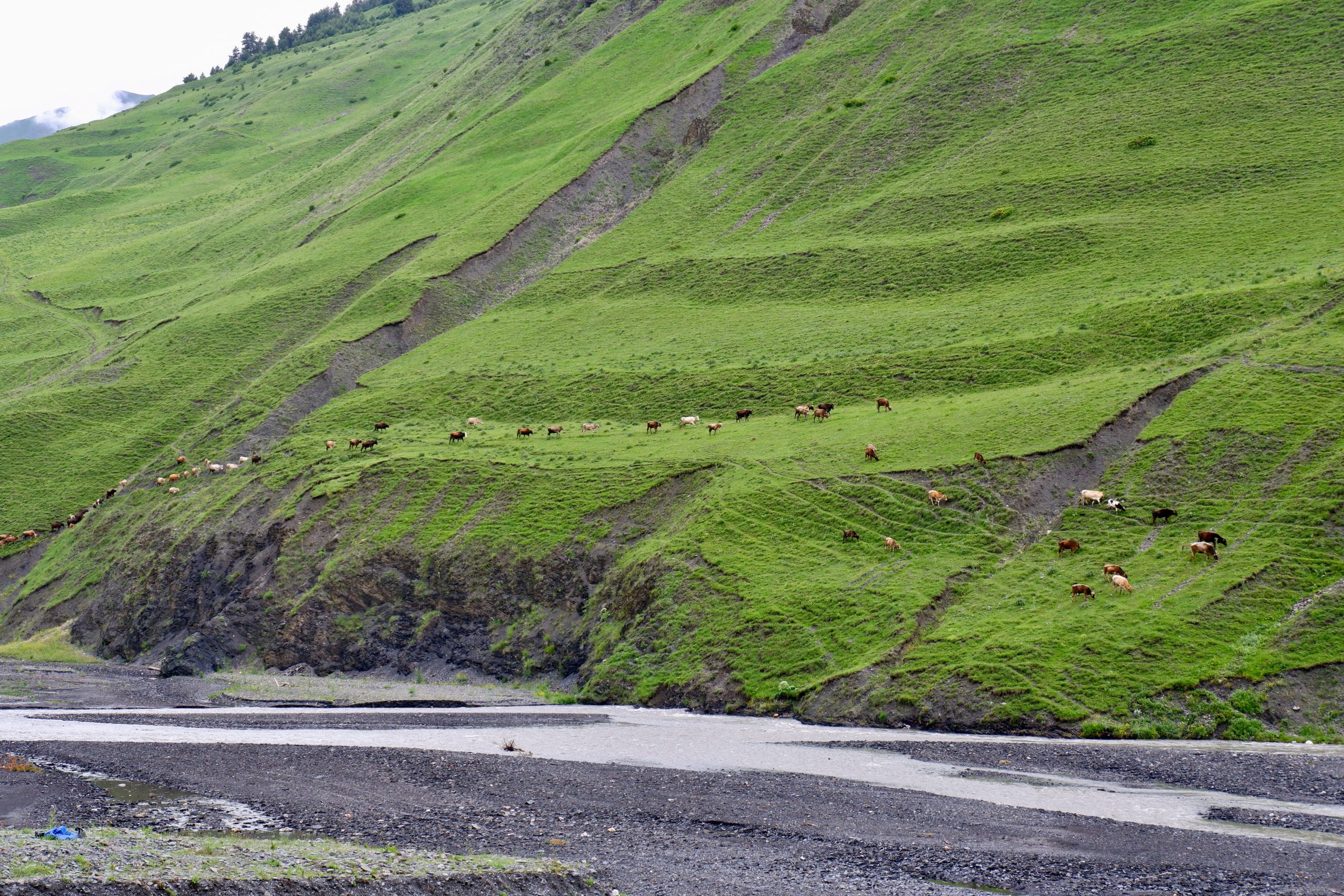 river
river
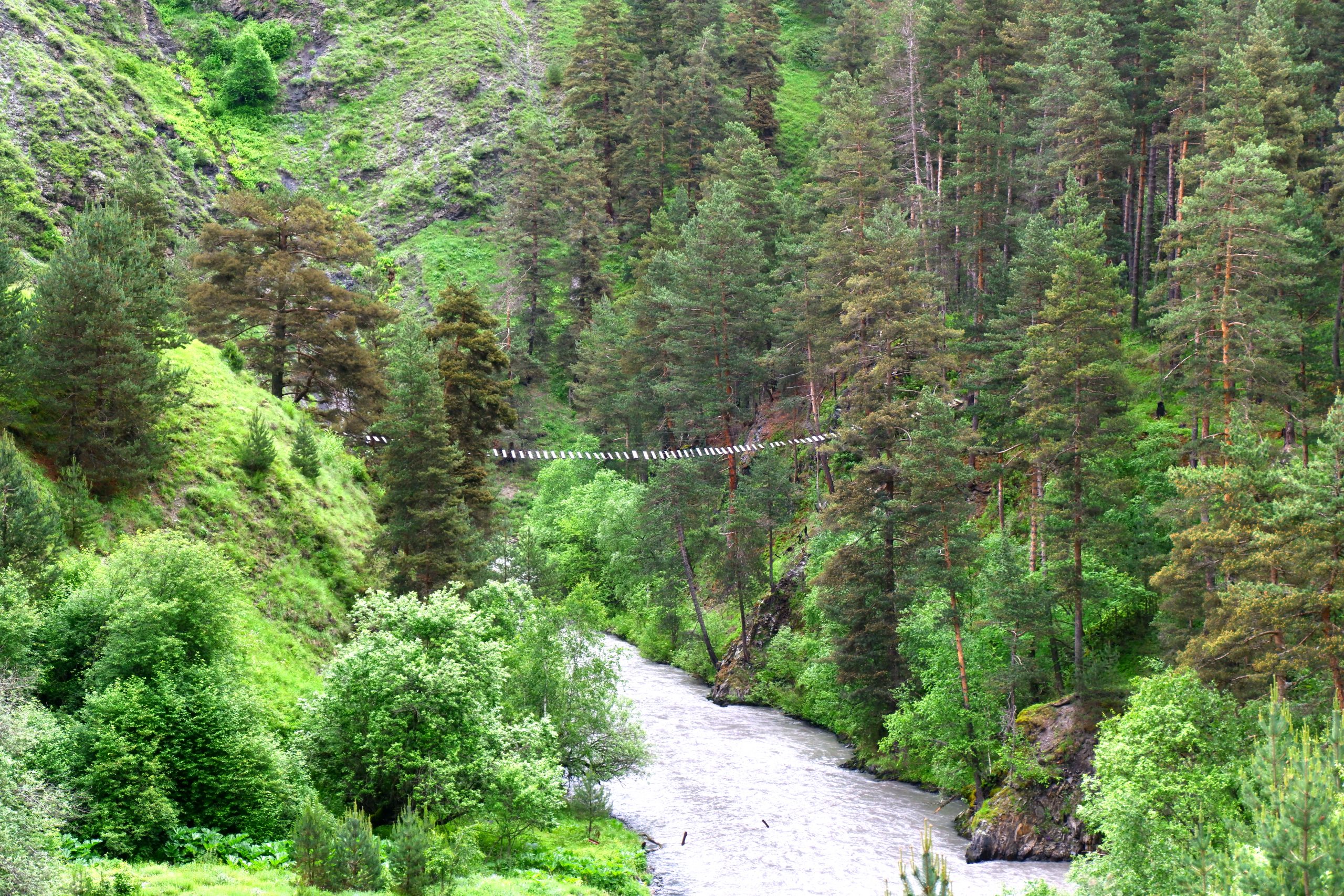 suspension bridge, fortunately we didn’t have to cross
suspension bridge, fortunately we didn’t have to cross
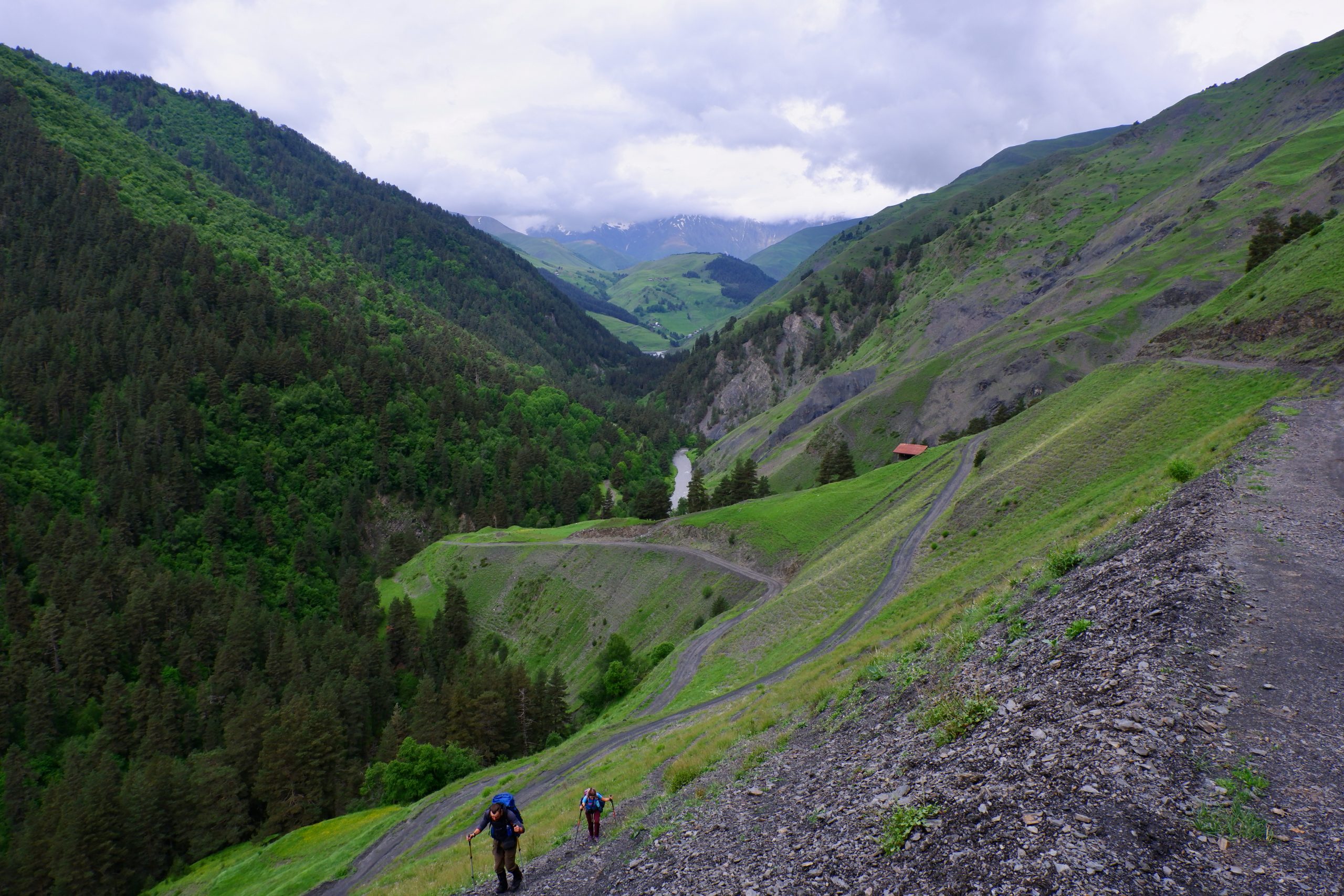 ascent
ascent
After the climb, we reached an altitude where we stayed with more slight ups and downs and that was the surprise for me. It was really nice to walk so far up and to be able to look everywhere. It would have been even nicer if the sun had been nice, but at least it was mostly dry. Only once did it start to rain, but it stopped again. You could see how the valley was forested far up and above it the grassy slopes began and small villages were settled.
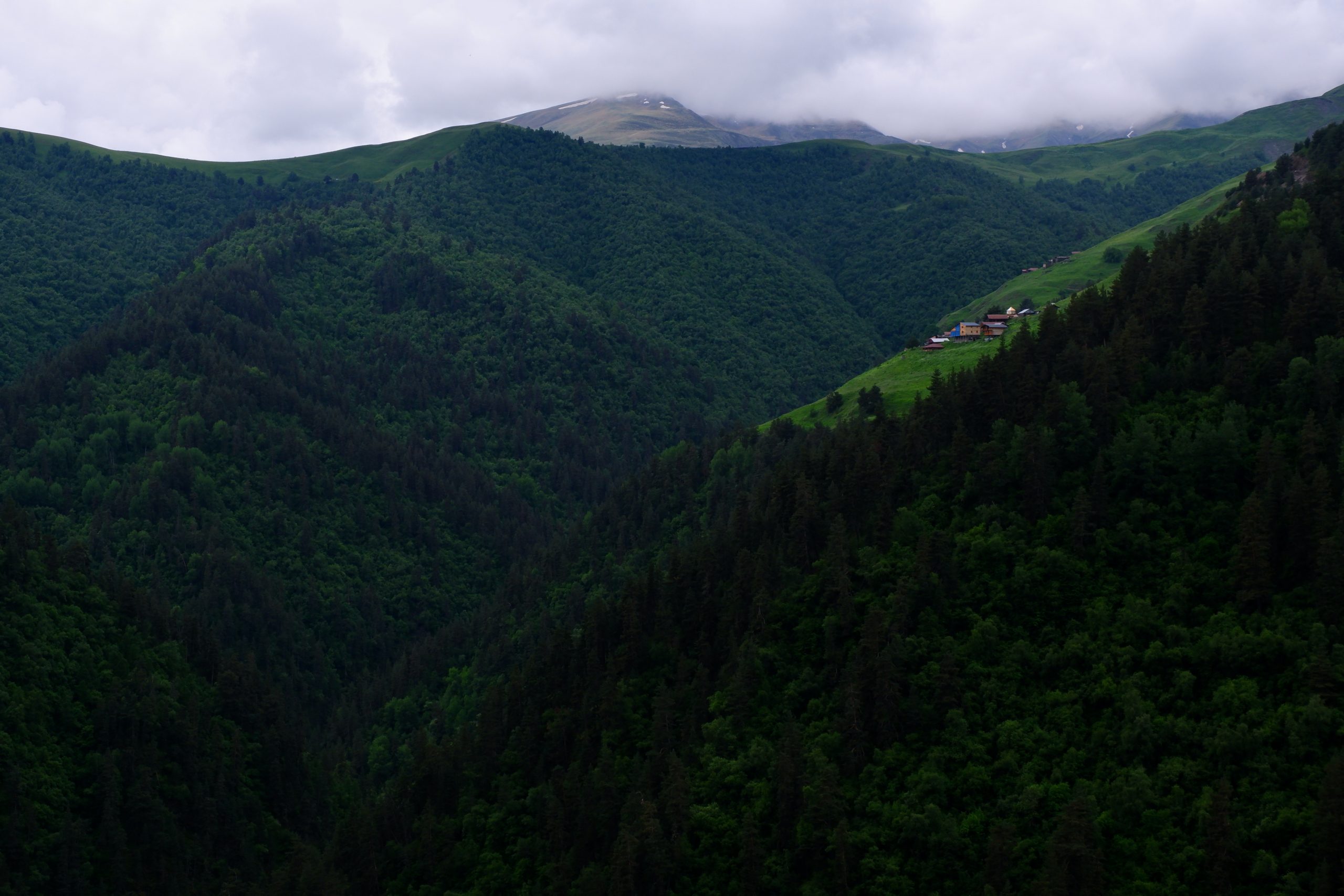 village
village
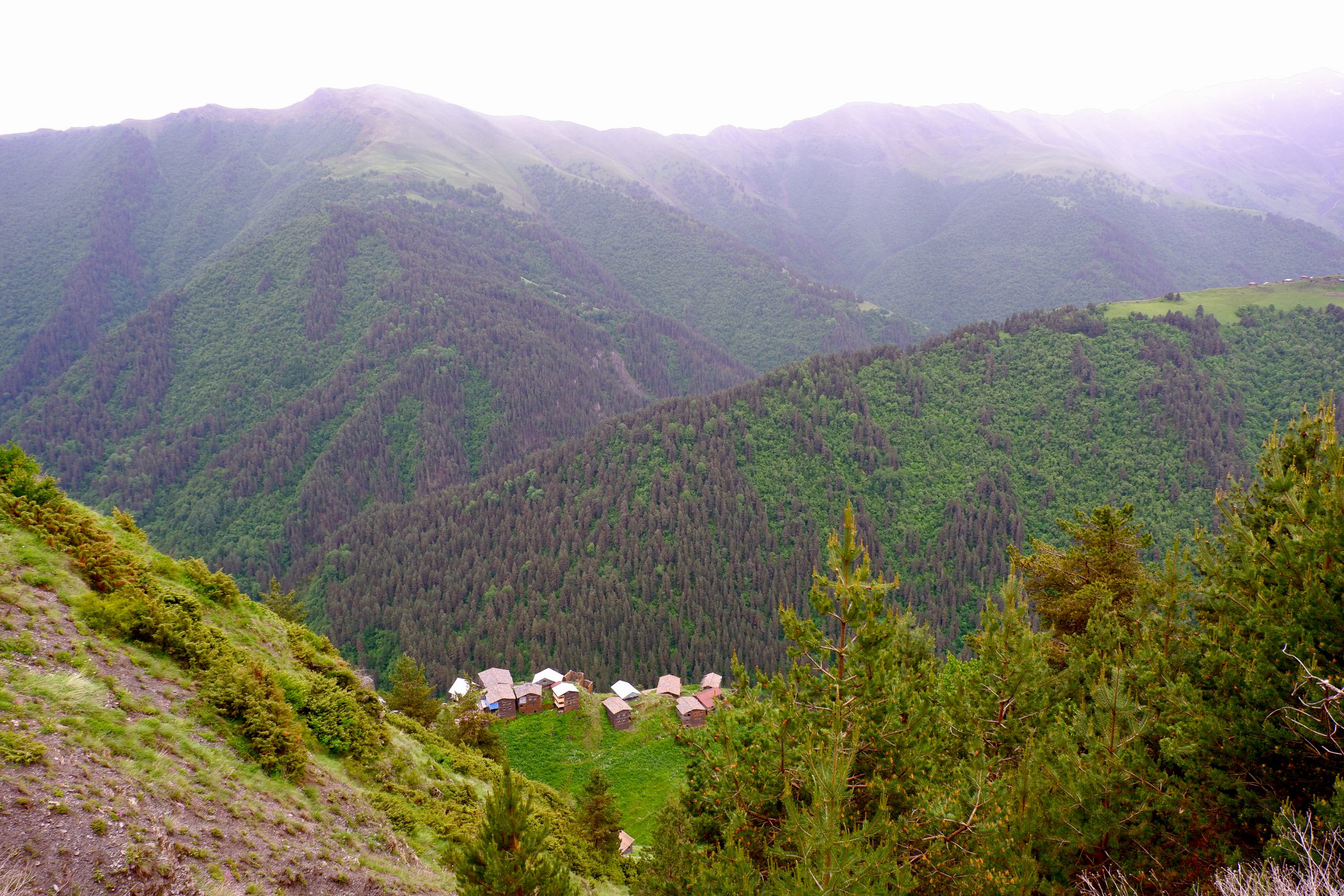 other village
other village
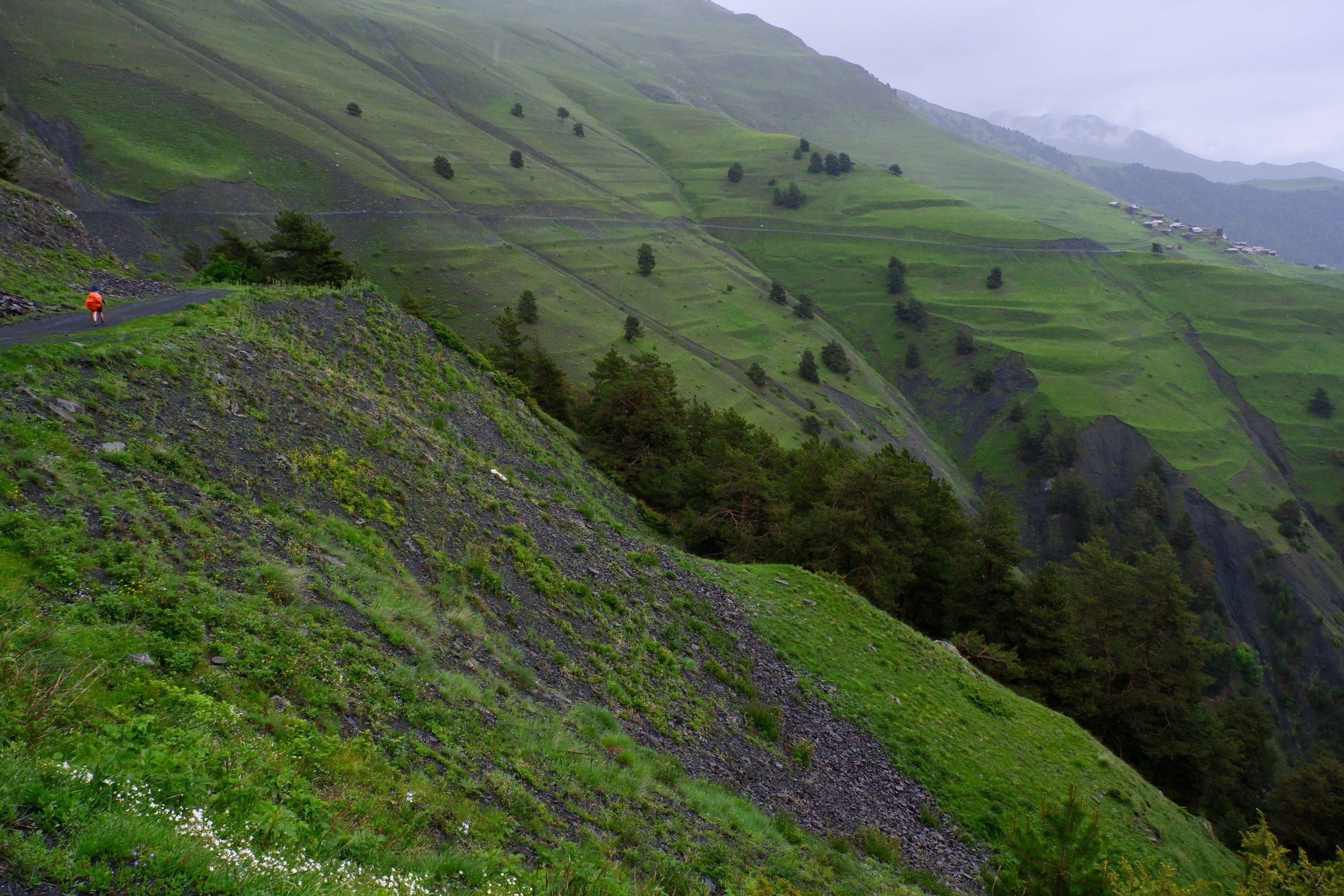 hiking trail
hiking trail
We felt relatively safe from dogs on this road, but wrong. There was a single homestead just a few metres below. I was walking ahead (but barely keeping my distance) and all of a sudden a yapping dog came racing up. and another. And another. In the end we counted 6 of them! Why does someone need 6 dogs to guard a property? After the initial shock gave me the usual body reaction of backing away, I remembered the instructions and raised the stick threateningly. Nino and Pavels were also there in a moment and reacted. There were several handy stones on the road, we picked them up and hurled them at the dogs. The dogs kept barking, but there was no real attack. And throwing stones we were able to move out of their zone.
I’m a total loser at throwing stones and asked Pavels if the dogs would even take me seriously with that. He compared it to someone having a gun ein their hand and missing shooting, and whether I wasn’t afraid of getting hit. Yeah right. It’s the same with dogs. And stone on muzzle hurts like hell. So always throw them hard, no matter where they land.
The two of them were still a little upset about the fact that someone keeps so many bad dogs right on this often-travelled route. I was happy with my personal dog development. There are still fear reactions and I won’t get rid of them so easily, but it’s manageable, I can react, it’s useful. But for me it is also clear: never never never never hike alone in the Caucasus!
Then we met a large group of travellers on horses. As they rode past the dogs, we could hear them making noise again. But so many horses – no chance for dogs.
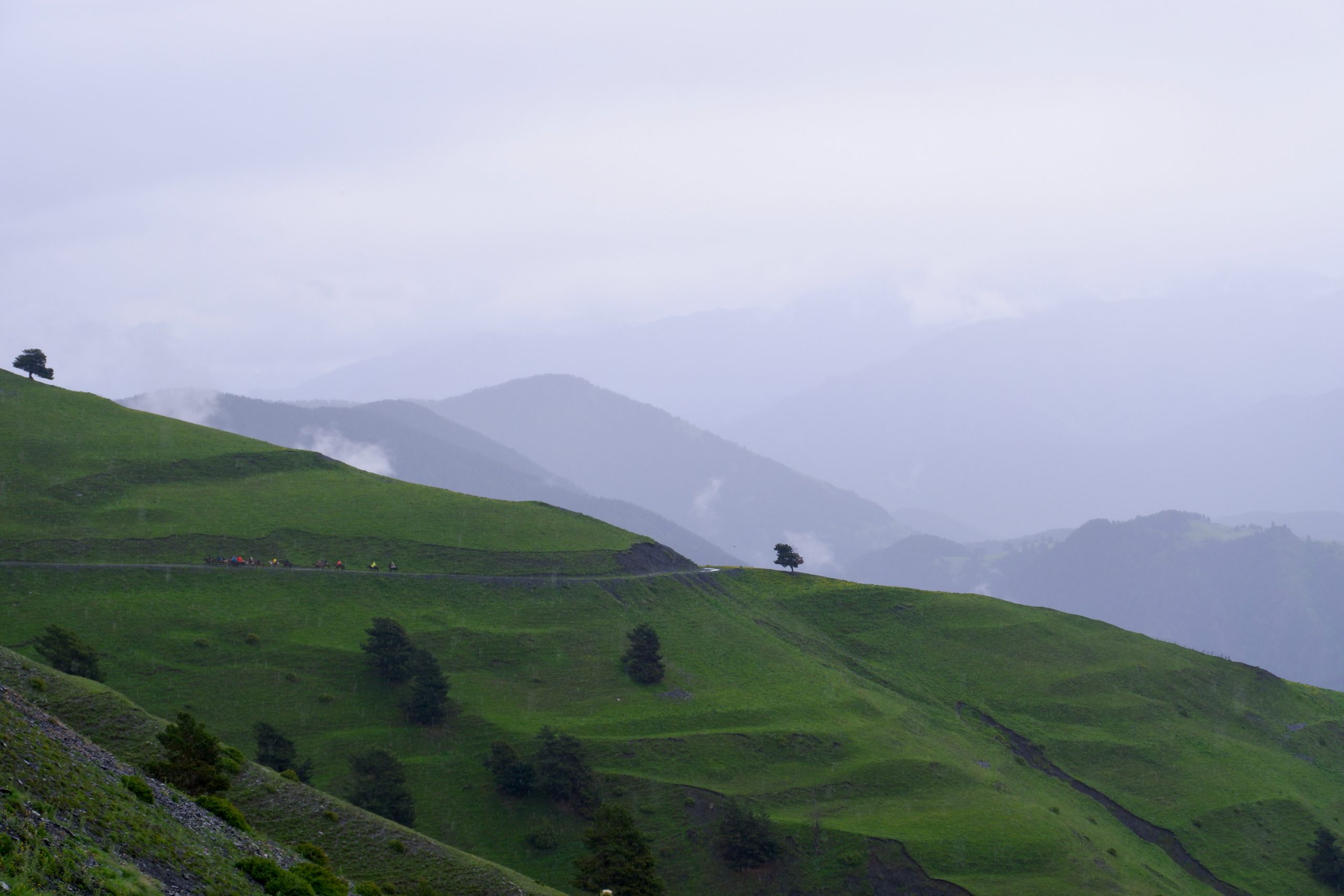 riding group 1
riding group 1
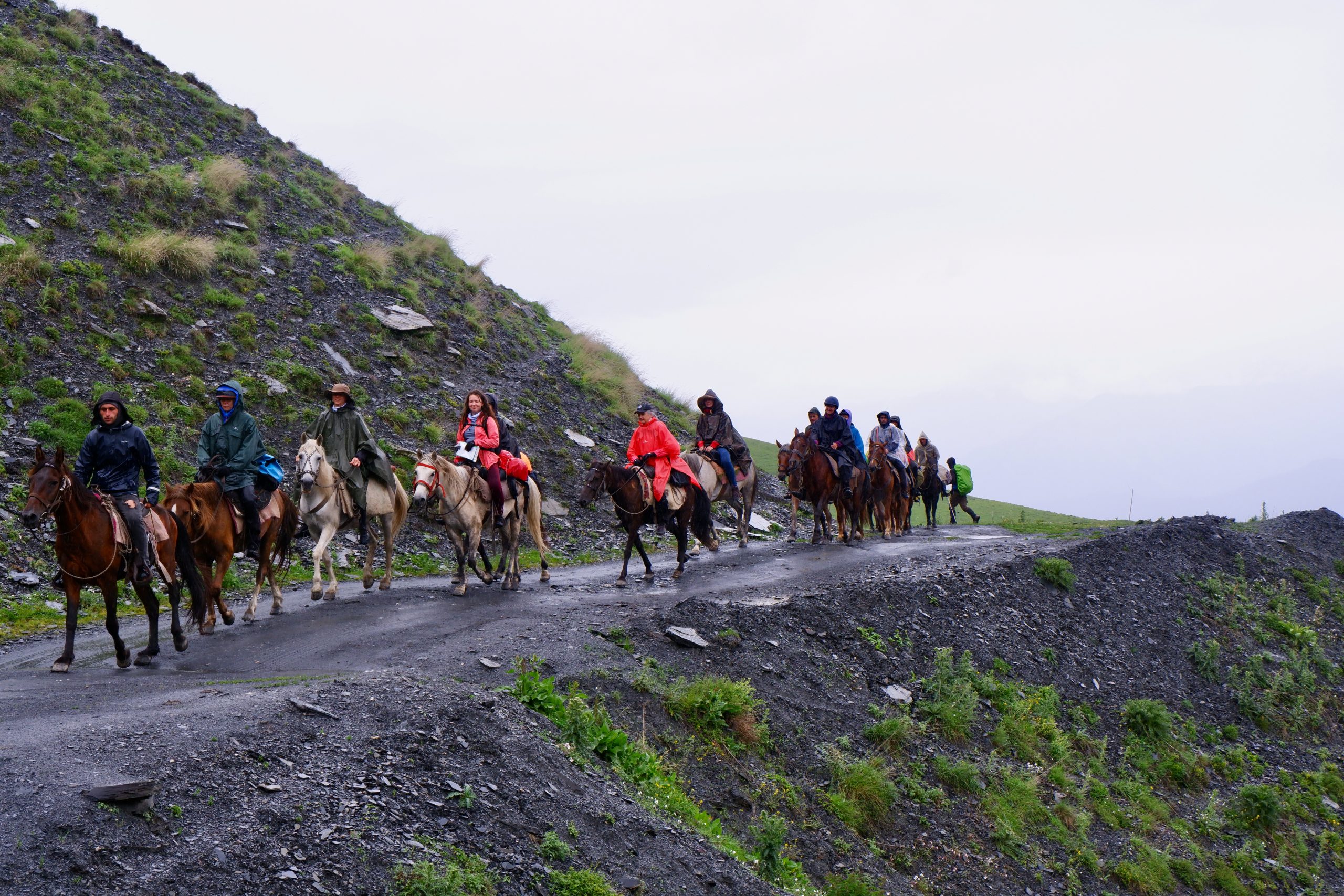 riding group 2
riding group 2
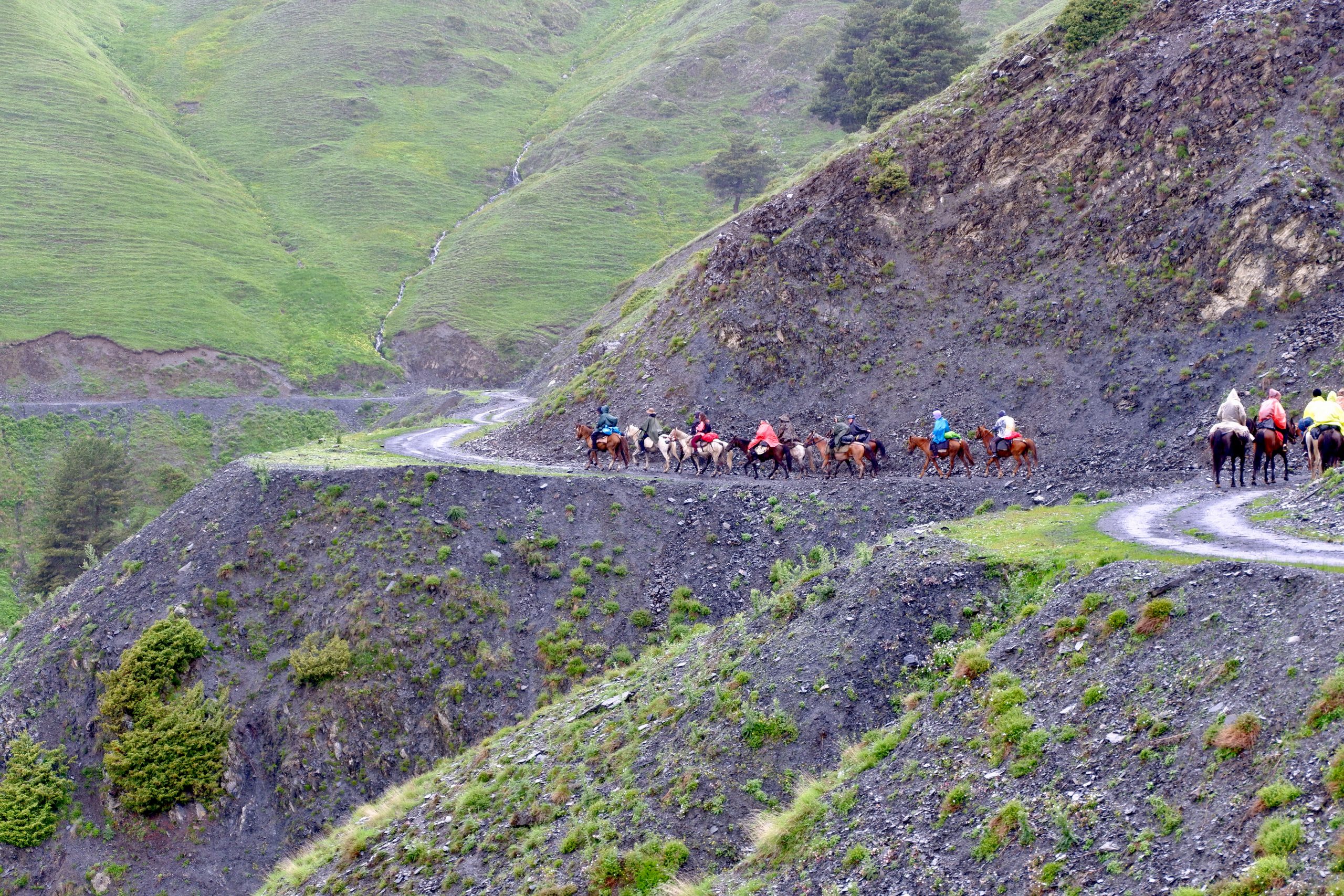 riding group 3
riding group 3
Then we reached Bochorna, which boasts the highest inhabited village in Europe at 2,345 metres. A little tired from rain and dogs, we were looking forward to a break in a guesthouse cafe, whose sign we saw at the bottom and also a person at the top.
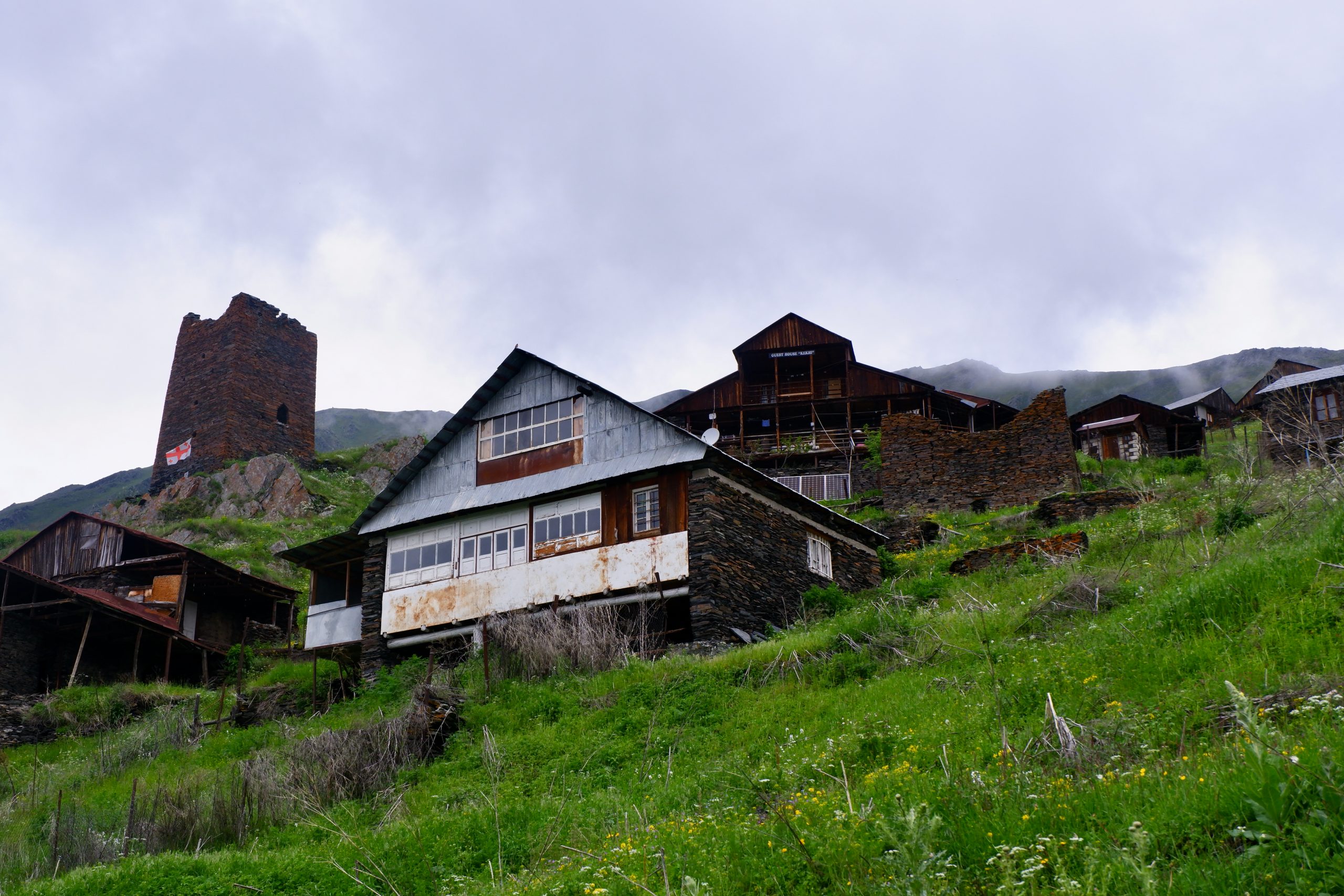 Guesthouse oben
Guesthouse oben
But that was not the guesthouse owner, his son would do that, but he was not there and he did not know if he would come this season. But we were welcome to sit down and talk a bit, and we even got a coffee. And it turned out that the gentleman is a bit of a celebrity. He is now 82 years old and the only doctor for this region. He lives all alone permanently in Bochorna in this house and takes care of all the sick and injured even in winter. In National Geographic an article about him was published.
Then two of his buddies arrived and wanted to happily drink alcohol with us, but we preferred to go on our way. But I still managed to get a selfie with him.
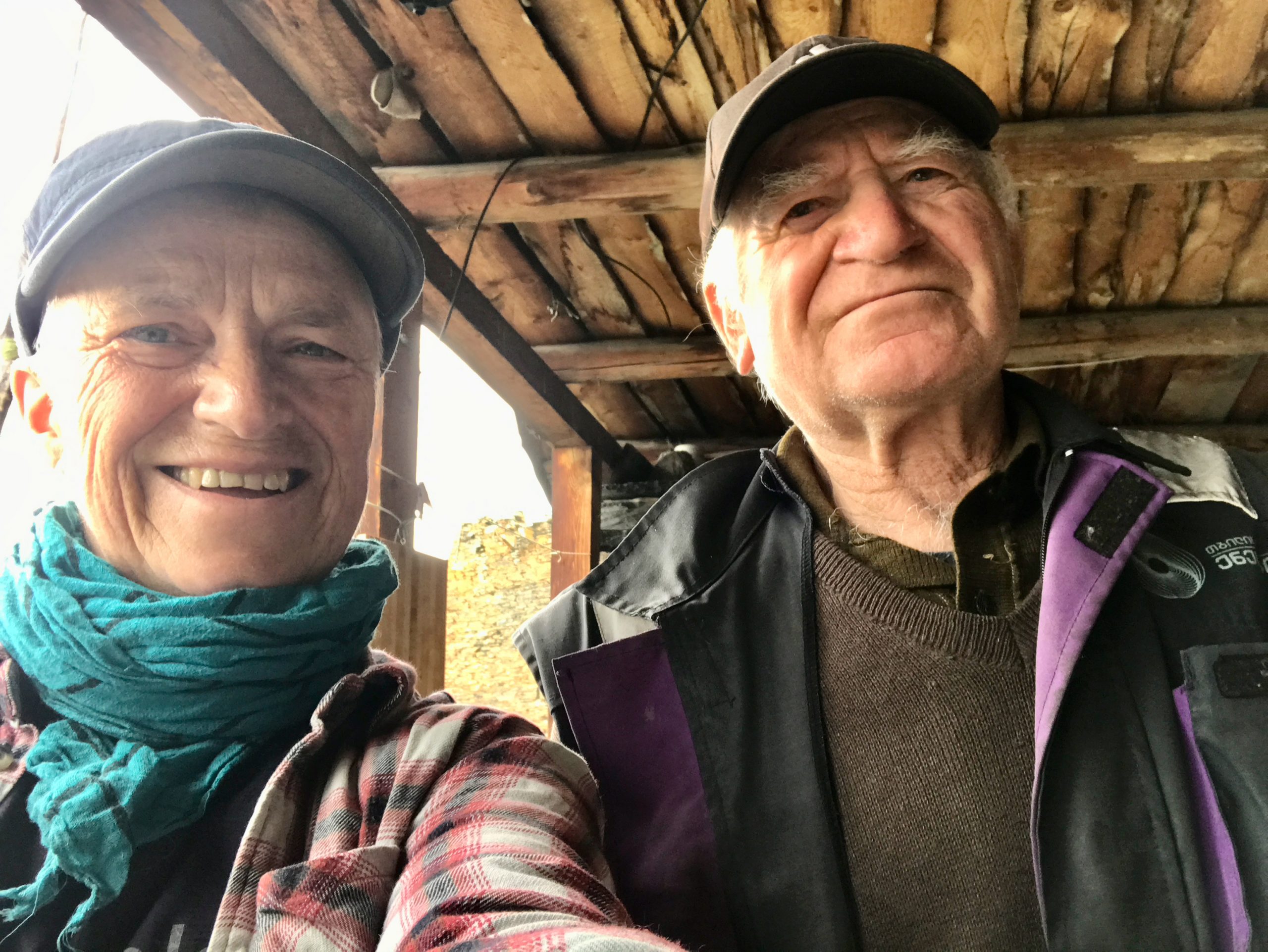 me and doctor
me and doctor
You can see that he is old, but he still manages very well. Only with names he is now completely confused and often no longer knows the name of someone.
We continued walking on the road. We saw a total of 3 cars, so it is not very busy. But accidents happen here too and people commemorate the people and cars.
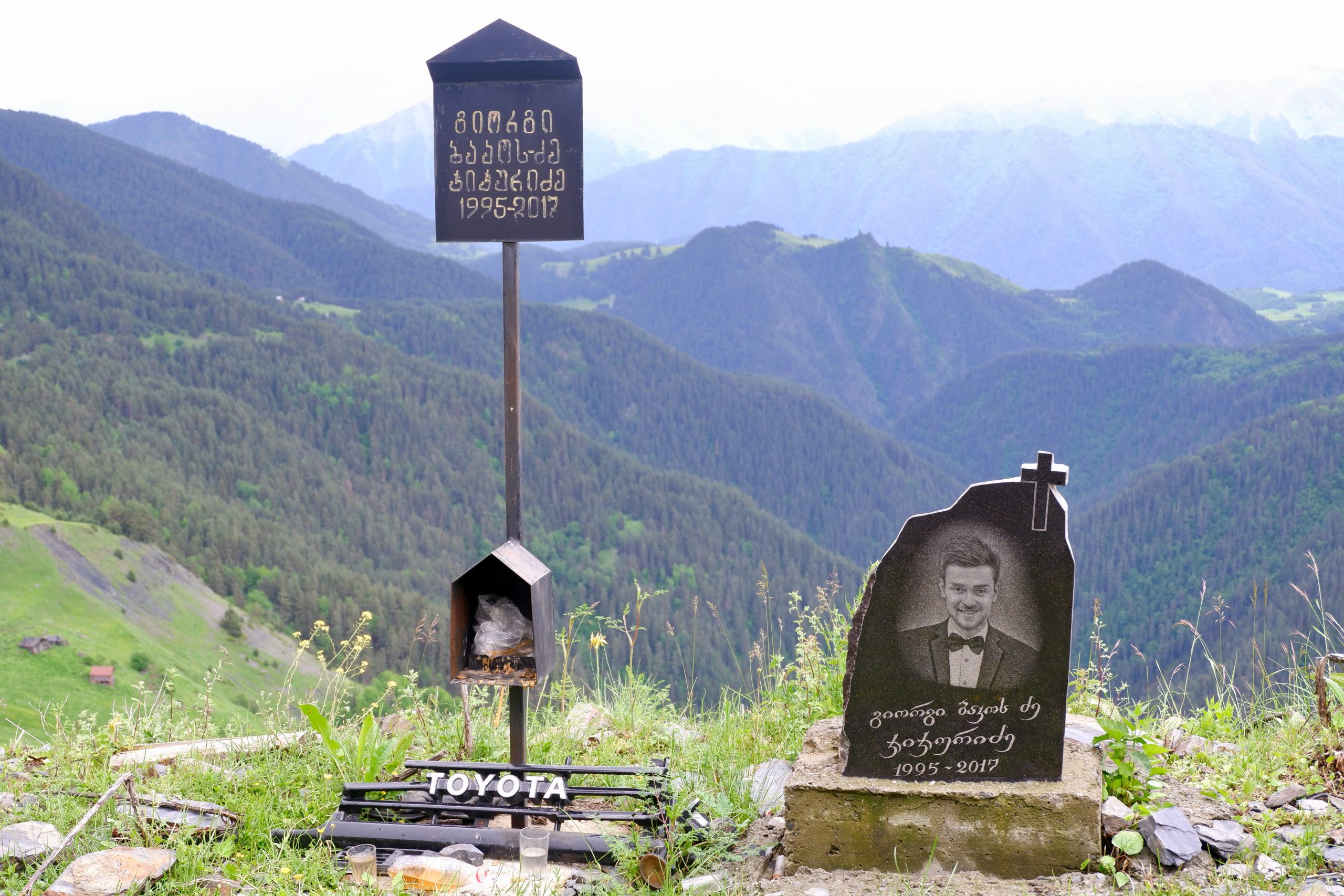 memorial 1
memorial 1
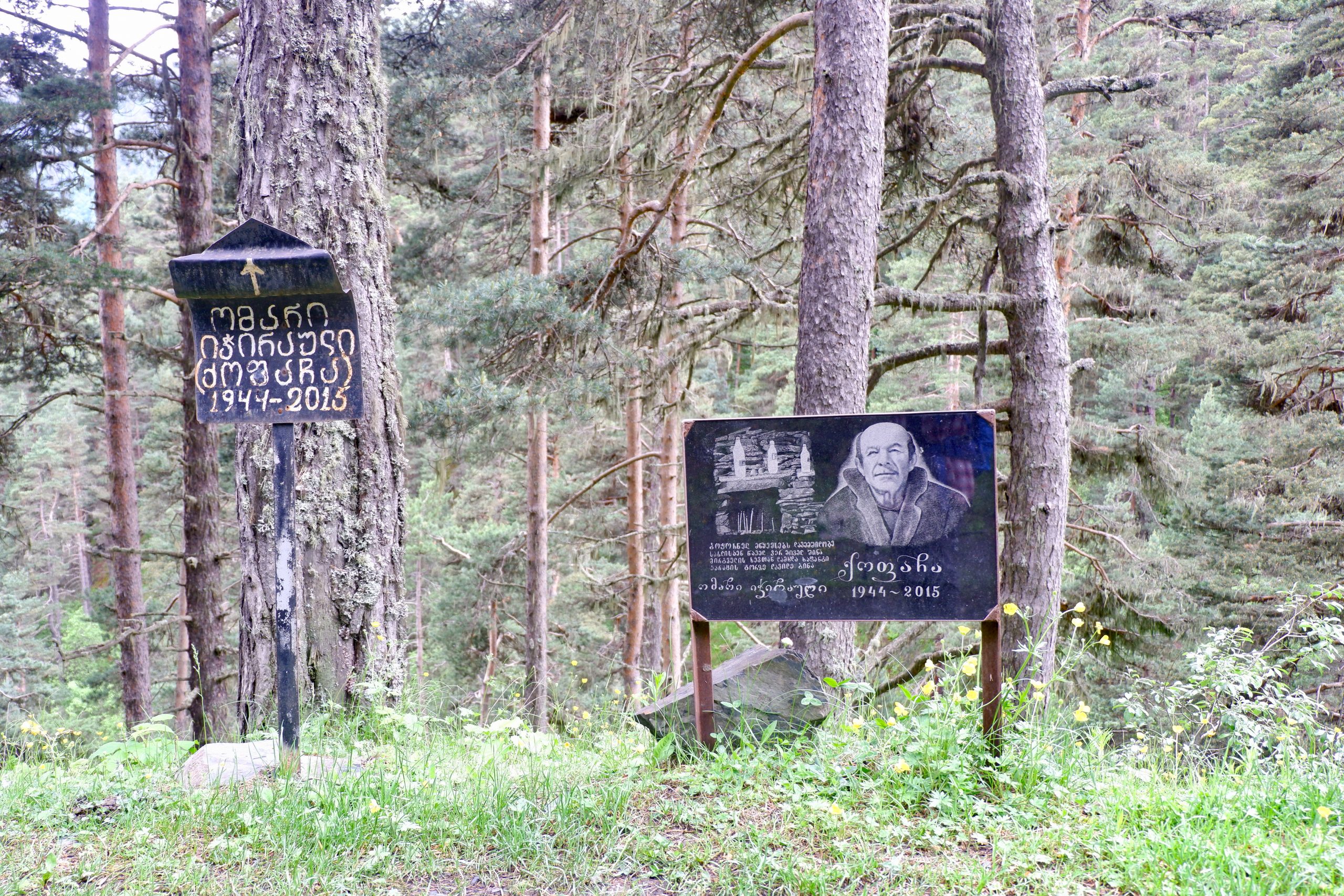 memorial 2
memorial 2
Somehow I was no longer really in the mood for photography. The motifs also seemed too similar: green with a grey sky. But I still enjoyed the tour. And at the end there was a really bad “climb” over muddy paths steeply up a rise and then a bit down again and then we were in Upper Omalo, our final destination. There is an old fort there:
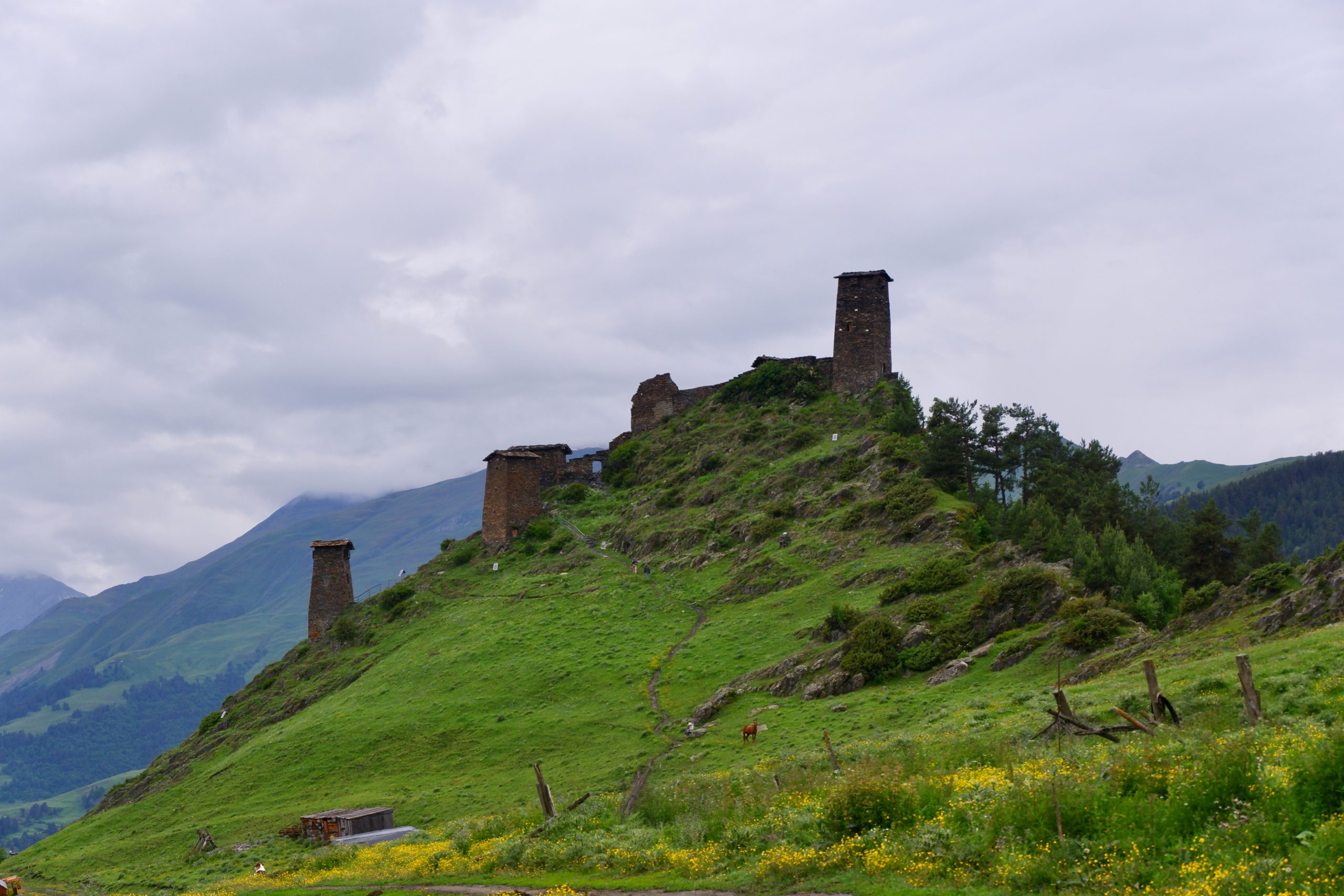 Keselo Fort
Keselo Fort
And directly below is the accommodation – a little different from the others, with attached bathroom and run by younger people. Oh, how good the shower was and taking off the wet shoes! It was a good feeling to have done the whole tour. I will no longer be afraid of 20 plus kilometres!
And that was it for the trekking tour. Conclusion: Worthwhile! We were a good hiking team, the landscape is beautiful, the people very nice, the food delicious and plentiful, the accommodation cosy – and you just put up with the dogs at some point. You have to be mindful and know what to do, but it’s manageable, as are the river crossings and maybe some steeper parts if you’re afraid of heights. But basically I was surprised at how varied it is. I didn’t get to learn very much about Tusheti, but I’ll catch up. There is a good website about it here. The region is supported by severals NGOs. Here is another interesting Article.
I have no idea what the actual tourist situation is like in July/August. There is a more popular multi-day trek to the neighbour region (Omalo-Shatili) that people like to do, but now the pass was still impassable due to snow. I hope it stays manageable with visitors – because of the short season and the strenuous road it is not impossible to stay nice.
In any case, I was very happy about this tour!
